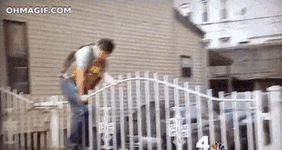Bronze Supporter
- Messages
- 382
- Reactions
- 486
Hi guys.
I am starting to get a bit more serious about consistently carrying in a time of failing confidence of civilized progression in our metropolitan areas. My personal safety and the safety of those in my company from my own firearm has always found top priority when I make any considerations in carrying a weapon. I strongly hope as well as believe I will much more likely experience negligent or accidental discharge ten times over the smallest chance in hell of my choice in using lethal force in the defense of my own, and I gratefully have so many habits/choices/routines/needs that I find protection and safety in passively without active force.
I was hoping to get a feeling of what others consider and what/when/where and also how (pocket/car/nightstand/iwb/owb, etc,) and the needs of the chosen carry piece considered. As stated I fear negligent discharge in my top considerations, and find the small 380 from M&P chambered with a thumb safety to meet my needs, however the 6 round limitation leaves me wanting.
I'd love to hear experiences or relationship with negligent discharge occurrences. Also hoping to find consensual recommended professional references.
I know it's all here in the many threads, but I keep getting distracted and end up in the classified section. Those bright and shiny classified opportunities so easily become what's really important!


I am starting to get a bit more serious about consistently carrying in a time of failing confidence of civilized progression in our metropolitan areas. My personal safety and the safety of those in my company from my own firearm has always found top priority when I make any considerations in carrying a weapon. I strongly hope as well as believe I will much more likely experience negligent or accidental discharge ten times over the smallest chance in hell of my choice in using lethal force in the defense of my own, and I gratefully have so many habits/choices/routines/needs that I find protection and safety in passively without active force.
I was hoping to get a feeling of what others consider and what/when/where and also how (pocket/car/nightstand/iwb/owb, etc,) and the needs of the chosen carry piece considered. As stated I fear negligent discharge in my top considerations, and find the small 380 from M&P chambered with a thumb safety to meet my needs, however the 6 round limitation leaves me wanting.
I'd love to hear experiences or relationship with negligent discharge occurrences. Also hoping to find consensual recommended professional references.
I know it's all here in the many threads, but I keep getting distracted and end up in the classified section. Those bright and shiny classified opportunities so easily become what's really important!














